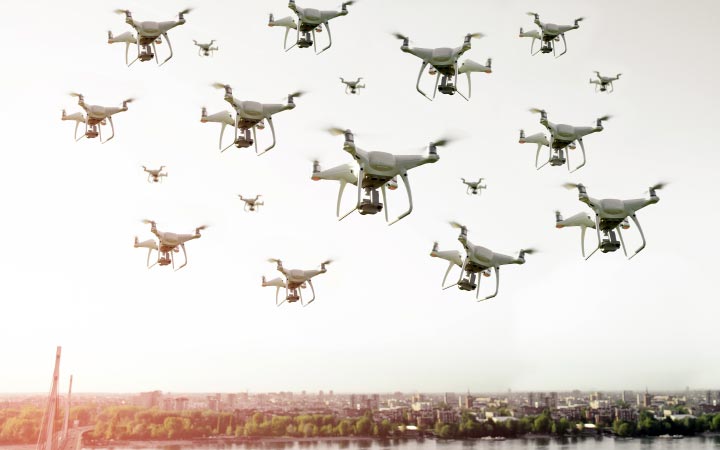Context
Fleets of unmanned autonomous vehicles have the capacity to undertake tasks that are difficult or dangerous for people, such as aerial searches of remote locations. But to undertake a joint task as effectively as possible programming that allows the vehicles to network and make decisions autonomously to achieve a common objective.
Solution

Rather than using a central command to control unmanned autonomous vehicles (UAVs), a swarm approach has been developed to create an autonomous multi-robot network. A combination of mechanical, electrical and software engineering has built UAVs, programmed with algorithms that allow them to react and think autonomously. In a networked system, the autonomous decision-making can be directed towards a shared objective, such as cleaning up an oil spill, environmental monitoring or searching for survivors of a mine collapse.
A swarm of cheap small robots, each with little capability, provides a more cost-effective option to using larger UAVs. Losing one small, cheap UAV is less costly than losing a more expensive more highly equipped one.
Algorithms also allow UAVs to reconfigure their operations, taking account of redundant participants in the swarm, to optimise the outcome with remaining resources. Using many smaller UAVs working together also provides improved coverage capability and reduced cost.
Impact
In Australia, UAVs are now used for agricultural monitoring as well as for surf and rescue in the ocean. In bush fire-fighting operations, autonomous systems can work in conjunction with humans as part of human-swarm interactions to provide critical information on the changing fire conditions. We are working with aerospace, defence, critical infrastructure and mining partners on potential multiscale applications.